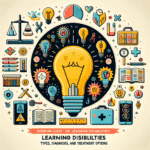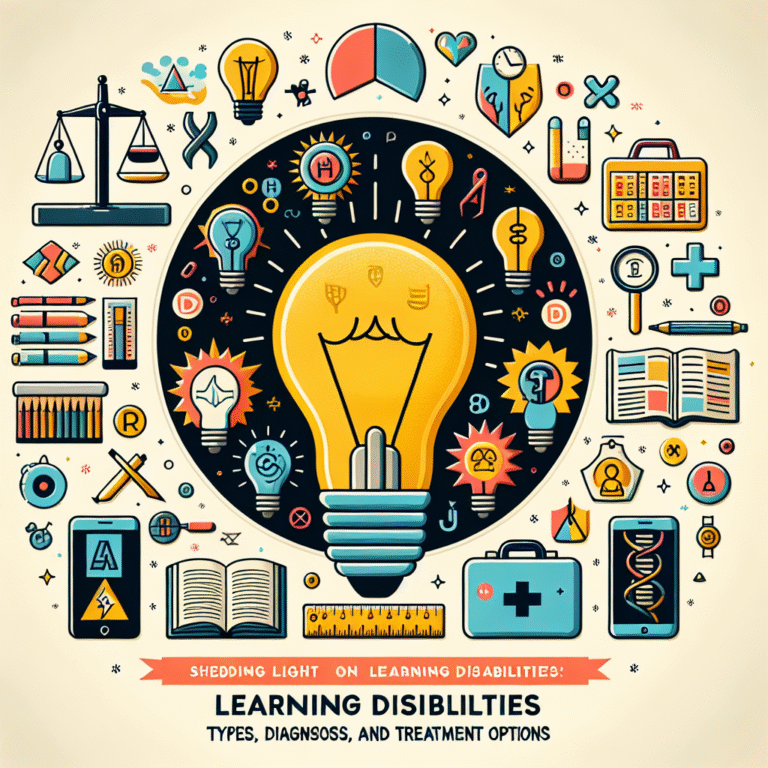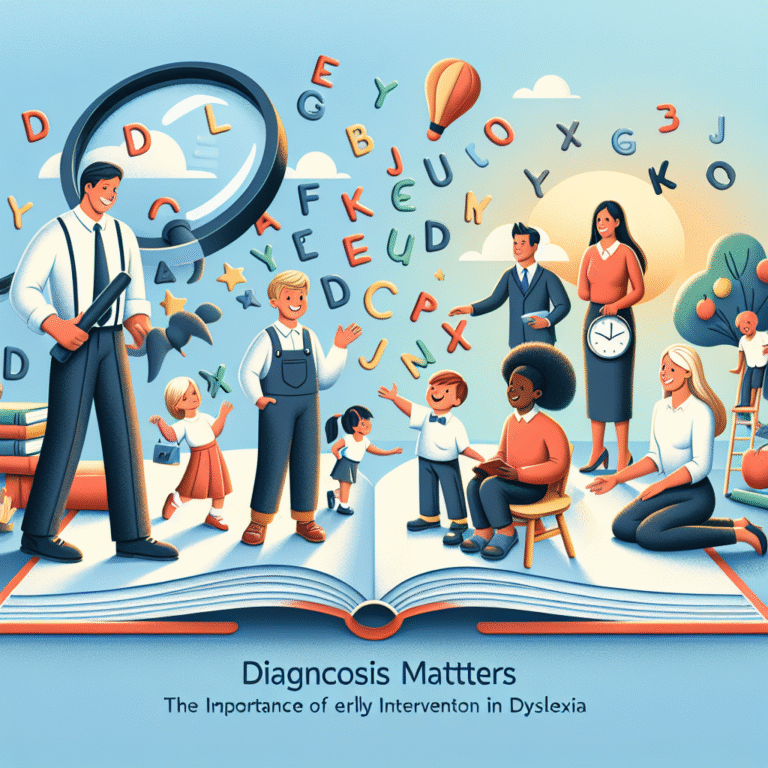
Creating a Structured Environment: Essential Time Management Tips for Learners with Disabilities
Finding the right strategies to manage time effectively is crucial for learners with disabilities. The importance of creating a structured environment cannot be overstated. It sets the stage for success, enabling students to thrive academically and personally. In this article, we explore proven time management tips designed specifically for learners with disabilities, emphasizing the creation of a structured environment that fosters productivity and focus.
Introduction: The Need for Structure
Imagine a world where learners with disabilities can navigate their academic journeys with ease, confidence, and success. This isn’t merely wishful thinking—it’s a goal that can be achieved with the right structure and time management practices. Structured environments are critical in minimizing distractions and fostering a productive atmosphere. Moreover, understanding and applying essential time management tips can enhance learning experiences and outcomes.
In this comprehensive guide, we will delve deep into practical strategies and insights to help create a structured environment and discuss time management tips tailored for learners with disabilities. Let’s embark on this journey together, ensuring every learner can harness their full potential.
Understanding the Importance of a Structured Environment
A structured environment is characterized by predictability, organization, and clarity. For many learners with disabilities, these attributes can alleviate anxiety and enhance focus. A structured environment helps to create patterns in learning, which are essential for retention and understanding.
Benefits of a Structured Environment
- Reduced Anxiety: A predictable environment minimizes surprises, helping learners feel more secure.
- Increased Focus: Clear organizational strategies reduce distractions, allowing learners to concentrate better on tasks.
- Enhanced Independence: With a structured approach, learners can develop skills that promote self-sufficiency and confidence.
Case Study: Emily’s Journey
Emily is a high school student with ADHD. Before implementing a structured environment, she struggled to keep up with assignments and manage her time effectively. After working with her educational support team to establish a routine, incorporate visual schedules, and set clear deadlines, Emily drastically improved her academic performance and reduced her anxiety.
Emily’s story exemplifies the profound impact of creating a structured environment and how it can enhance time management skills for learners facing challenges.
Key Time Management Tips for Learners with Disabilities
1. Set Clear Goals
Setting specific, measurable, achievable, relevant, and time-bound (SMART) goals is paramount. For learners with disabilities, breaking down tasks into smaller, manageable steps can make a world of difference.
Example:
- Goal: Complete a project on climate change.
- Steps:
- Research information (2 days)
- Create an outline (1 day)
- Write the draft (3 days)
- Revise (2 days)
- Finalize (1 day)
A structured environment emphasizes these steps, helping learners visualize progress.
2. Use Visual Aids
Visual aids such as calendars, color-coded charts, and checklists can significantly enhance comprehension and retention. These tools help learners create mental maps of their tasks, increasing their ability to manage time effectively.
| Tool | Purpose |
|---|---|
| Wall Calendar | For long-term planning |
| Daily Checklist | For daily tasks and priorities |
| Timers | For managing specific periods |
3. Develop a Routine
Consistency breeds familiarity, making routines vital for learners with disabilities. A daily schedule provides mouthfeel predictability, aiding memory and time management skills.
Tips for Developing Routines:
- Start and end the day at the same time.
- Schedule regular breaks to prevent burnout.
- Incorporate time for relaxation.
4. Prioritize Tasks with a System
Teach learners to prioritize tasks using a system like the Eisenhower Matrix. This tool helps distinguish between urgent and important tasks, guiding decision-making for time allocation.
Case Study: Liam’s Efficient Time Management
Liam, a college student with dyslexia, learned to prioritize his assignments through the Eisenhower Matrix. By categorizing tasks into four quadrants (urgent vs. not urgent and important vs. not important), Liam was able to focus first on high-priority tasks. This system allowed him to complete projects ahead of deadlines, resulting in higher grades and reduced stress.
5. Integrate Technology to Assist in Time Management
There are countless apps and tools designed to aid time management. By integrating technology into time management strategies, learners can utilize reminders, timers, and organizational tools to stay on track.
Recommended Apps:
- Todoist: Great for task management.
- Google Calendar: For scheduling events and reminders.
- Forest: Helps maintain focus and productivity.
Creating Accommodations in the Classroom
Incorporating accommodations specific to learners with disabilities can further enhance their time management skills. Schools and educators should be proactive in addressing the unique needs of their students.
Types of Accommodations
- Extended Time: Allow extra time for assignments and tests.
- Alternate Formats: Provide materials in various formats, such as audiobooks or visual aids.
- Preferential Seating: Use seating arrangements that minimize distractions.
A Structured Approach to Classroom Accommodations
Work with educators to develop an Individualized Education Program (IEP) or 504 Plan tailored to each learner’s unique needs. These plans outline specific strategies and accommodations, ensuring that every student can benefit from a structured environment.
Monitoring Progress and Flexibility
Monitoring progress is essential for continuous improvement. Regular check-ins enable learners and educators to assess what’s working and make necessary adjustments.
Effective Monitoring Strategies
- Weekly Reflection Sessions: Encourage learners to evaluate their time management practices and identify areas for improvement.
- Visual Progress Tracking: Use charts or graphs to visually represent progress over time.
- Normalize Adjusting Plans: Teach learners that it’s okay to change tactics if certain strategies aren’t working.
Case Study: Sarah’s Adaptive Strategy
Sarah, a middle school student with autism, initially struggled with her routine. After several weeks, it became clear that her original schedule wasn’t fitting her needs. Through her regular reflection sessions, she and her teachers identified unnecessary rigidity. By adapting her routine to include more breaks and flexibility, Sarah found greater success in her studies and enhanced confidence.
Conclusion: Empowering Learners with Disabilities
Creating a structured environment combined with effective time management strategies can significantly empower learners with disabilities. By implementing the tips outlined in this article, educators, parents, and learners themselves can work collaboratively toward improved academic outcomes.
In closing, remember: a structured environment does not merely facilitate time management; it paves the way for independence, confidence, and a brighter future for learners with disabilities.
FAQs Section
1. What are the first steps to creating a structured environment for my child with disabilities?
Start by establishing a consistent daily routine, using visual aids like calendars, and breaking tasks into manageable steps.
2. How can I encourage my child to stick to their time management skills?
Incorporate rewards for goal completion and have regular check-ins to encourage accountability and reflection.
3. Are there specific apps that can help my child manage their time better?
Yes! Some effective apps include Todoist for task management, Google Calendar for scheduling, and Forest for maintaining focus.
4. What if my child struggles with implementing these time management tips?
Be patient and flexible. Consider adjusting the strategies and involve your child in the decision-making process to make them feel empowered.
5. Can a structured environment really make a difference in academic success?
Absolutely! Structured environments reduce anxiety and distractions, allowing learners to focus better and improve their overall performance.
By embracing a structured environment and effective time management practices, all learners, regardless of their challenges, can achieve their fullest potential. Together, let’s support each learner’s journey toward success.









